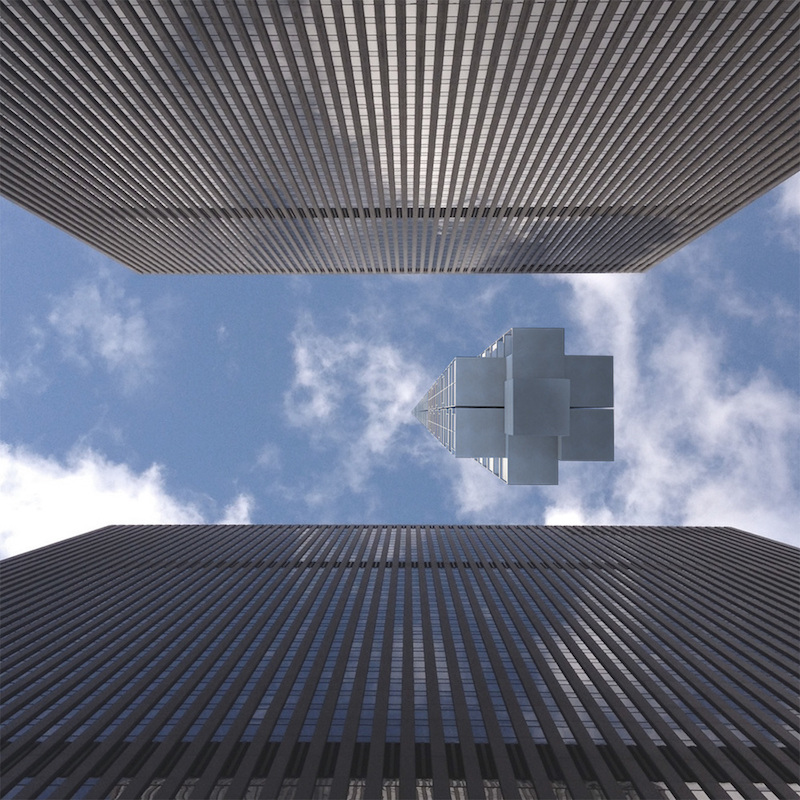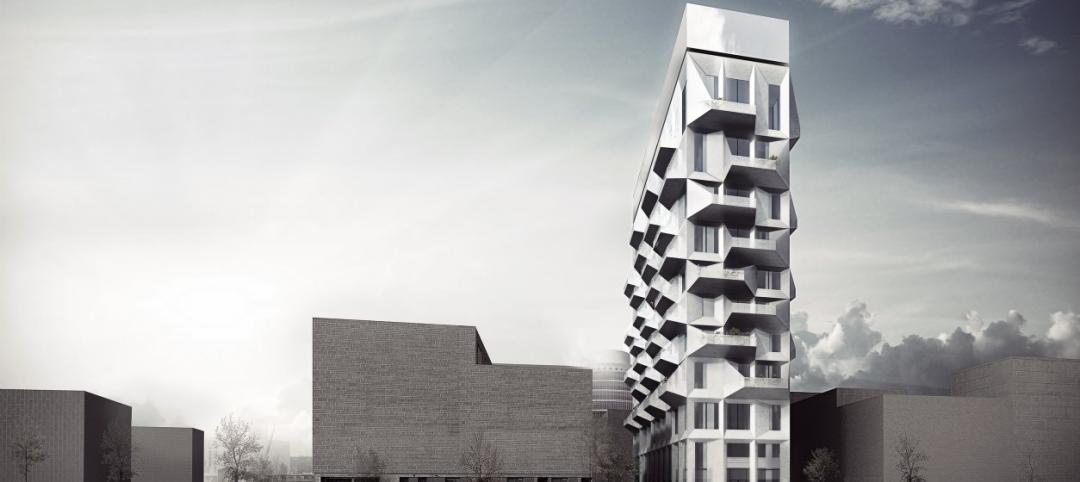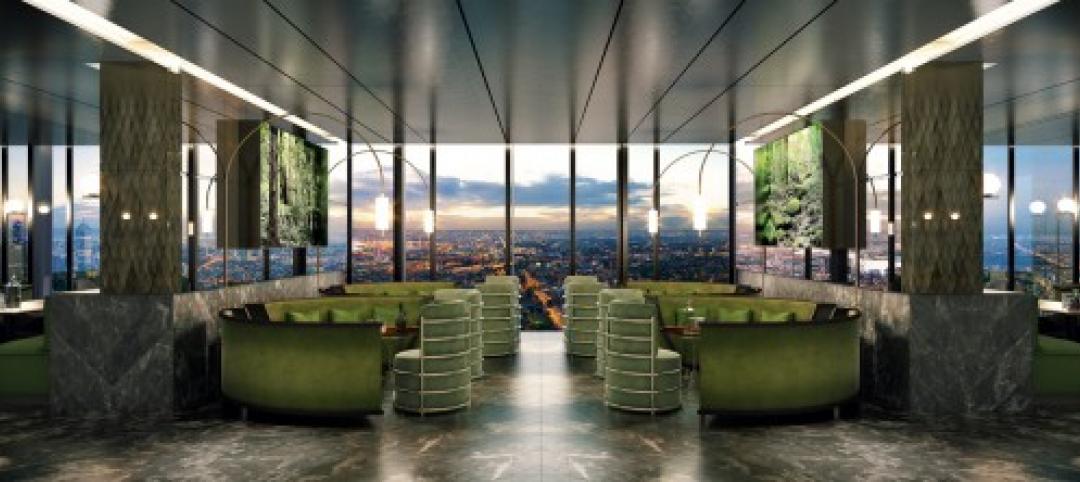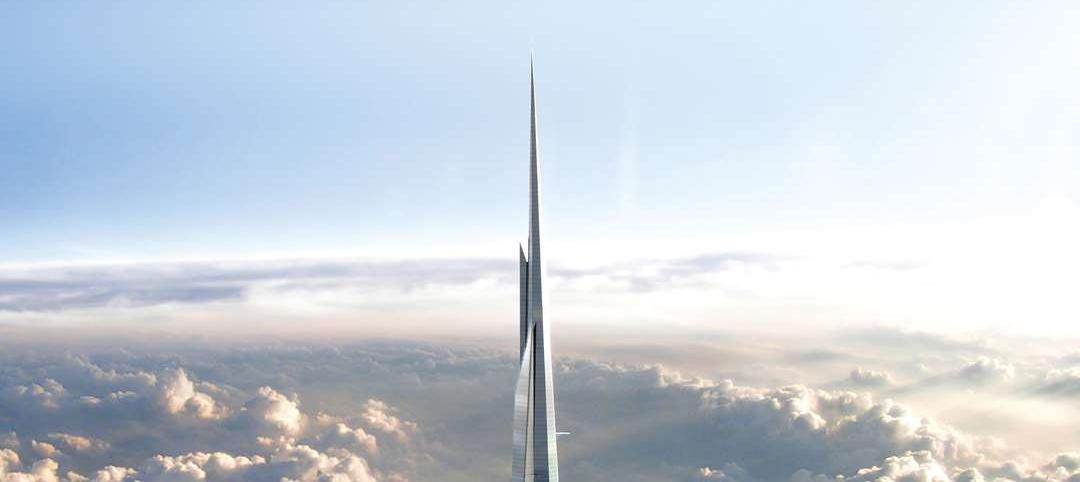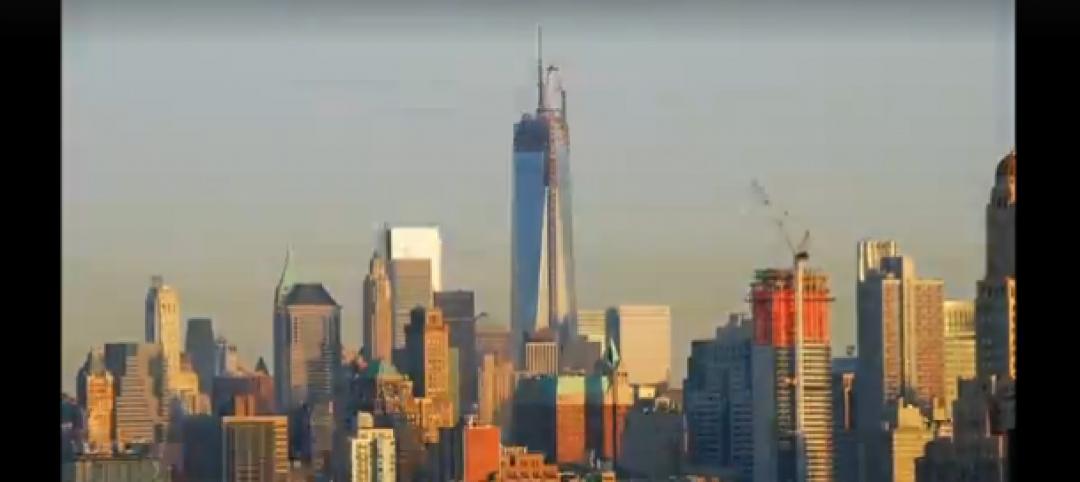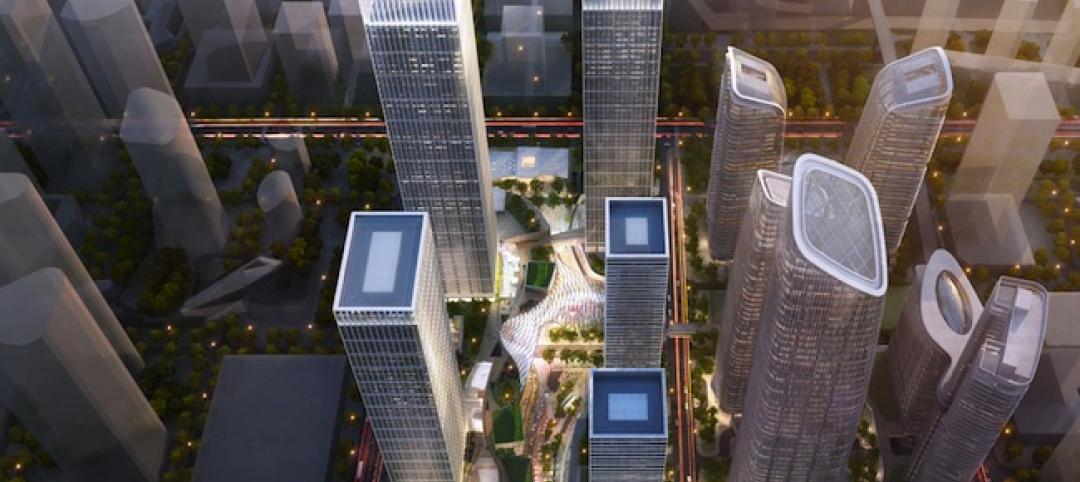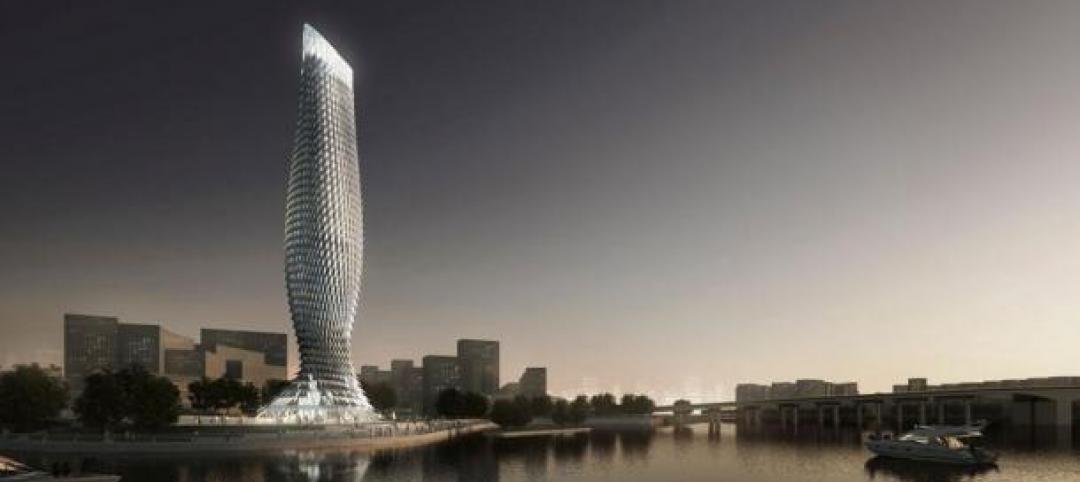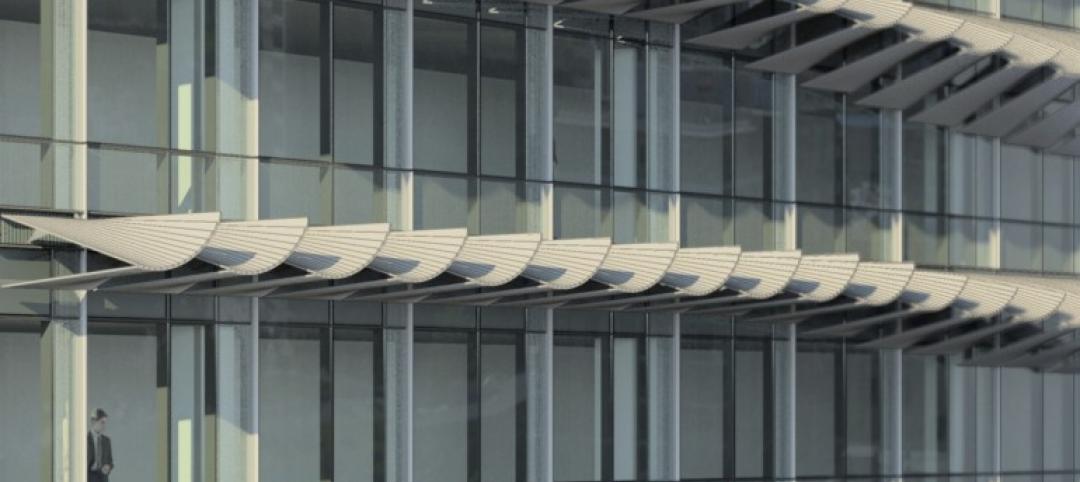Clouds Architecture Office is a New York-based firm known for their speculative designs and innovative (and often times seemingly unfeasible) approaches to architecture.
Among their inventive portfolio is a proposal for Martian architecture with the Mars Ice Home, a series of self-sufficient machine-like dwellings the drift among the clouds known as Cloud Skippers, and a concept for disaster relief that allows people to float above their ruined buildings or neighborhoods while they are being repaired called Cloud City. The firm’s most recent proposal, however, may also be its most radical.
The idea is to create a supertall skyscraper that, instead of springing from the Earth and climbing towards the sky, is suspended from an orbiting asteroid and hangs towards the ground like a giant stalactite (does that make it an earthscraper?).
Here is how the speculative tower, dubbed Analemma Tower (named after the figure-8 path the sun makes in the sky when viewed at the same time of day throughout the year), would work: A large asteroid would be placed into orbit over earth. From this asteroid, a high strength cable would be lowered towards the surface of the planet from which the supertall tower can be suspended. Since it is suspended in air, the tower can be constructed anywhere and transported to the final location. For this proposal, the tower would be constructed over Dubai since the city has proven to be a specialist in tall building construction while keeping costs at one-fifth those associated New York City construction.
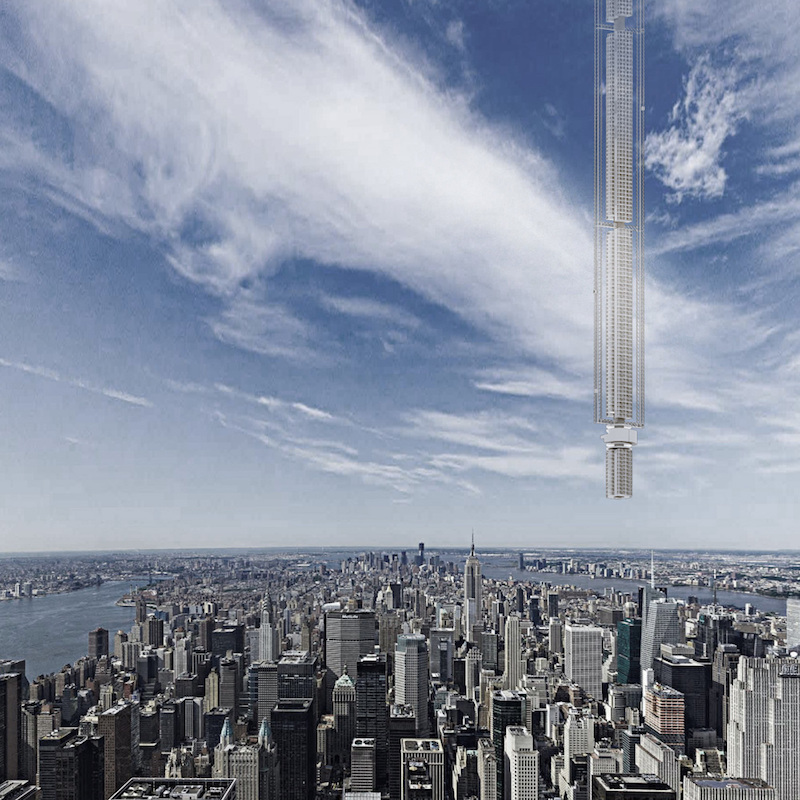 Rendering courtesy of Clouds Architecture.
Rendering courtesy of Clouds Architecture.
The asteroid’s geosynchronous orbit would match earth’s sidereal rotation period of one day. The tower would trace a figure-8 shape and return to the same position in the sky each day. The building would travel between the northern and southern hemispheres on a daily loop. At the bottom of the figure-8 pattern, the tower would move at its slowest speed to allow for the possibility of the towers residents to interface with the planet’s surface. The slowest part of the trajectory would occur over New York City.
If you’re thinking all of this sounds like science-fiction hokum, Clouds Architecture has a response, “Manipulating asteroids is no longer relegated to science fiction. In 2015 the European Space Agency sparked a new round of investment in asteroid mining concerns by proving with its Rosetta mission that it's possible to rendezvous and land on a spinning comet,” the firm writes on its website. “NASA has scheduled an asteroid retrieval mission for 2021 which aims to prove the feasibility of capturing and relocating an asteroid.”
The tower itself would be sectioned into several components. The office, business, and commercial components would be closest to the bottom, followed by garden and agricultural areas, and then a large section for residential. The top of the tower would be devoted to devotional activities. As one ventures higher into the building, the size and shape of the windows changes to account for pressure and temperature differentials. Due to the curvature of the earth, the very top of the tower would get an additional 40 minutes of sunlight each day but due to the near vacuum and -40C temperatures outside would prevent people from going outside and would make living on this level difficult.
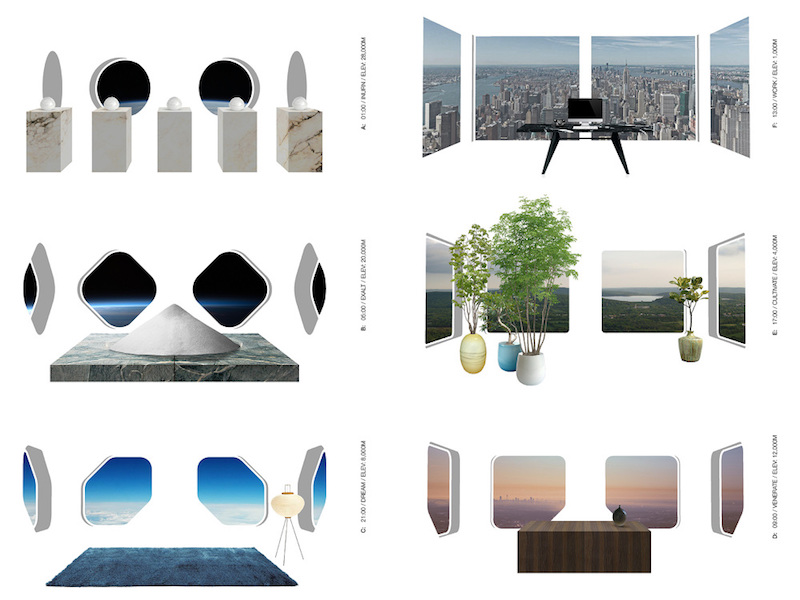 Rendering courtesy of Clouds Architecture.
Rendering courtesy of Clouds Architecture.
Analemma Tower would be powered by space-based solar panels that would receive constant sunlight. Water would be filtered and recycled in a semi-closed loop system and would be replenished by condensate and rainwater from clouds. The elevator system would use cable-less electromagnetic elevators as a workaround to height restrictions imposed by elevator cable spool volume.
Of the tower, Clouds Architecture says, “Analemma Tower is a proposal for the world's tallest building ever. Harnessing the power of planetary design thinking, it taps into the desire for extreme height, seclusion, and constant mobility. If the recent boom in residential towers proves that sales price per square foot rises with floor elevation, then Analemma Tower will command record prices, justifying its high cost of construction.”
Obviously, neither this tower nor anything like it is going to be built anytime soon, so what’s the point? Well, it’s an exercise in imagination and creativity meant to get the metaphorical juices flowing. Every innovative product or service that comes out and changes the world is an amalgamation of speculative ideas, failed projects, and new ideas that stemmed from a simple what if? thought. This is one of those what if? thoughts.
Plus, it’s just pretty damn cool, zany science and all.

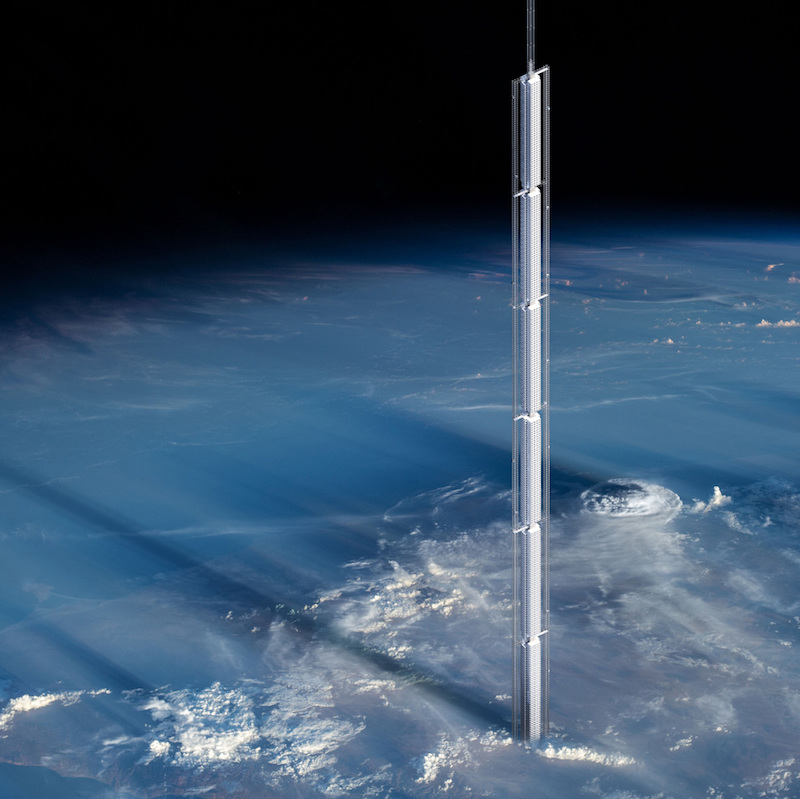 Rendering courtesy of Clouds Architecture.
Rendering courtesy of Clouds Architecture.
 Rendering courtesy of Clouds Architecture.
Rendering courtesy of Clouds Architecture.
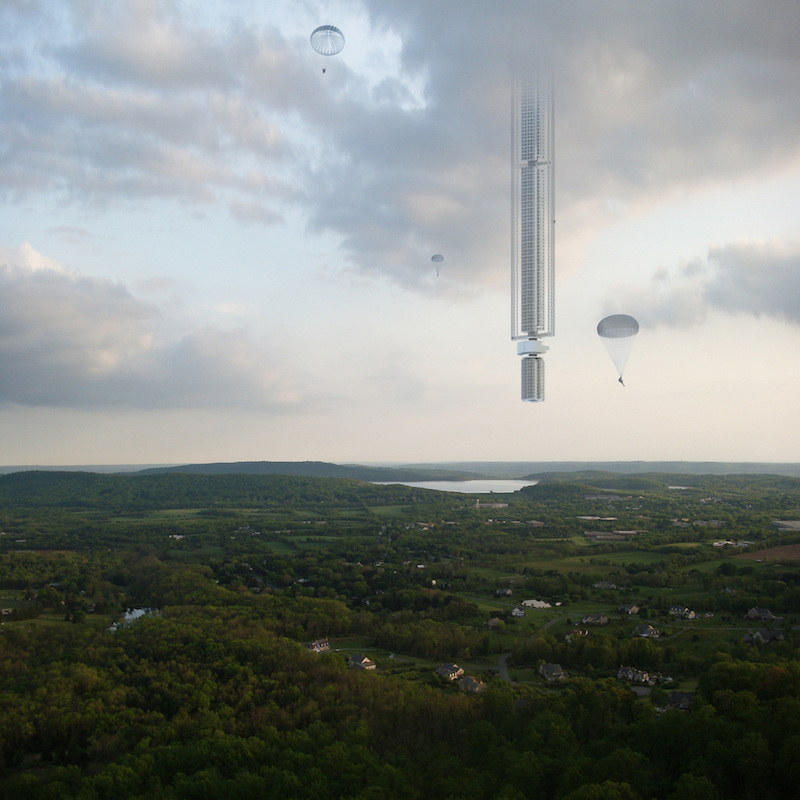 Rendering courtesy of Clouds Architecture.
Rendering courtesy of Clouds Architecture.
Related Stories
| Sep 5, 2014
First Look: Zaha Hadid's Grace on Coronation towers in Australia
Zaha Hadid's latest project in Australia is a complex of three, tapered residential high-rises that have expansive grounds to provide the surrounding community unobstructed views and access to the town's waterfront.
| Sep 2, 2014
Extreme conversion: 17-story industrial silo to be converted to high-rise housing
As part of Copenhagen's effort to turn an industrial seaport into a bustling neighborhood, Danish architecture firm COBE was invited to convert a grain silo into a residential tower.
| Sep 2, 2014
Melbourne's tallest residential tower will have 'optically transformative façade'
Plans for Melbourne's tallest residential tower have been released by Elenberg Fraser Architects. Using an optically transformative façade and botanical aesthetic, the project seeks to change the landscape of Australia's Victoria state.
| Aug 28, 2014
Stantec releases design for Edmonton's tallest tower
At 227 meters, Stantec Tower will be the tallest building in the city, dwarfing the two next-tallest: Epcor Tower and Manulife Tower.
| Aug 25, 2014
Tall wood buildings: Surveying the early innovators
Timber has been largely abandoned as a structural solution in taller buildings during the last century, in favor of concrete and steel. Perkins+Will's Rebecca Holt writes about the firm's work in surveying the burgeoning tall wood buildings sector.
| Aug 25, 2014
'Vanity space' makes up large percentage of world's tallest buildings [infographic]
Large portions of some skyscrapers are useless space used to artificially enhance their height, according to the Council on Tall Buildings and Urban Habitat.
| Aug 25, 2014
Photographer creates time-lapse video of 1 WTC using 30,000 photos
Choosing from 30,000 photos he took from the day construction began in 2006 to the day when construction was finished in 2012, Brooklyn-based photographer Benjamin Rosamund compressed 1,100 photos to create the two-minute video.
| Aug 19, 2014
Goettsch Partners unveils design for mega mixed-use development in Shenzhen [slideshow]
The overall design concept is of a complex of textured buildings that would differentiate from the surrounding blue-glass buildings of Shenzhen.
| Aug 15, 2014
First look: RMJM’s 'jumping fish' tower design for the Chinese Riviera
The tower's fish-jumping gesture is meant to symbolize the prosperity and rapid transformation of Zhuhai, China.
| Aug 12, 2014
Shading prototype could allow new levels of environmental control for skyscraper occupants
Developed by architects at NBBJ, Sunbreak uses a unique three-hinged shade that morphs from an opaque shutter to an abstract set of vertical blinds to an awning, depending on what is needed.


